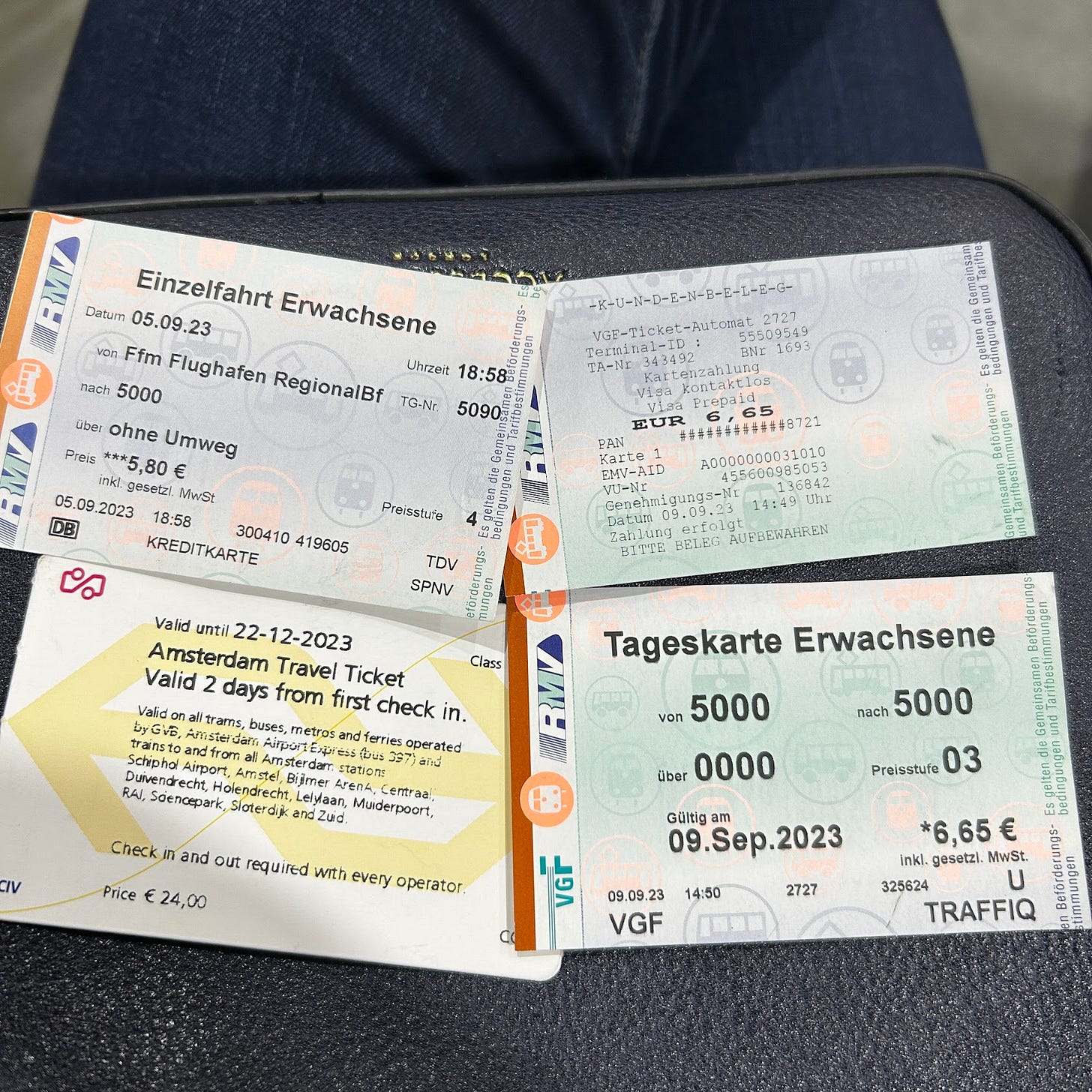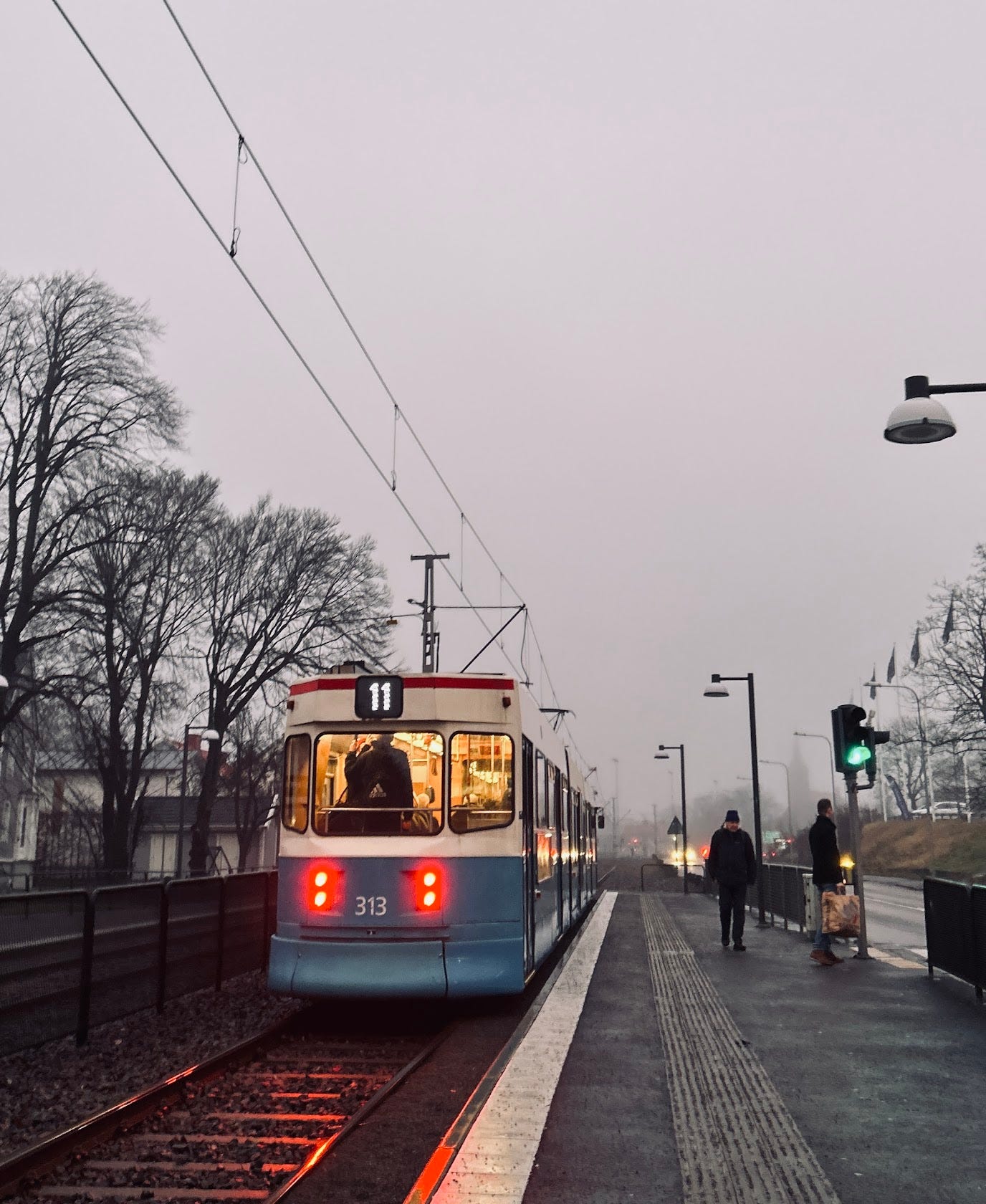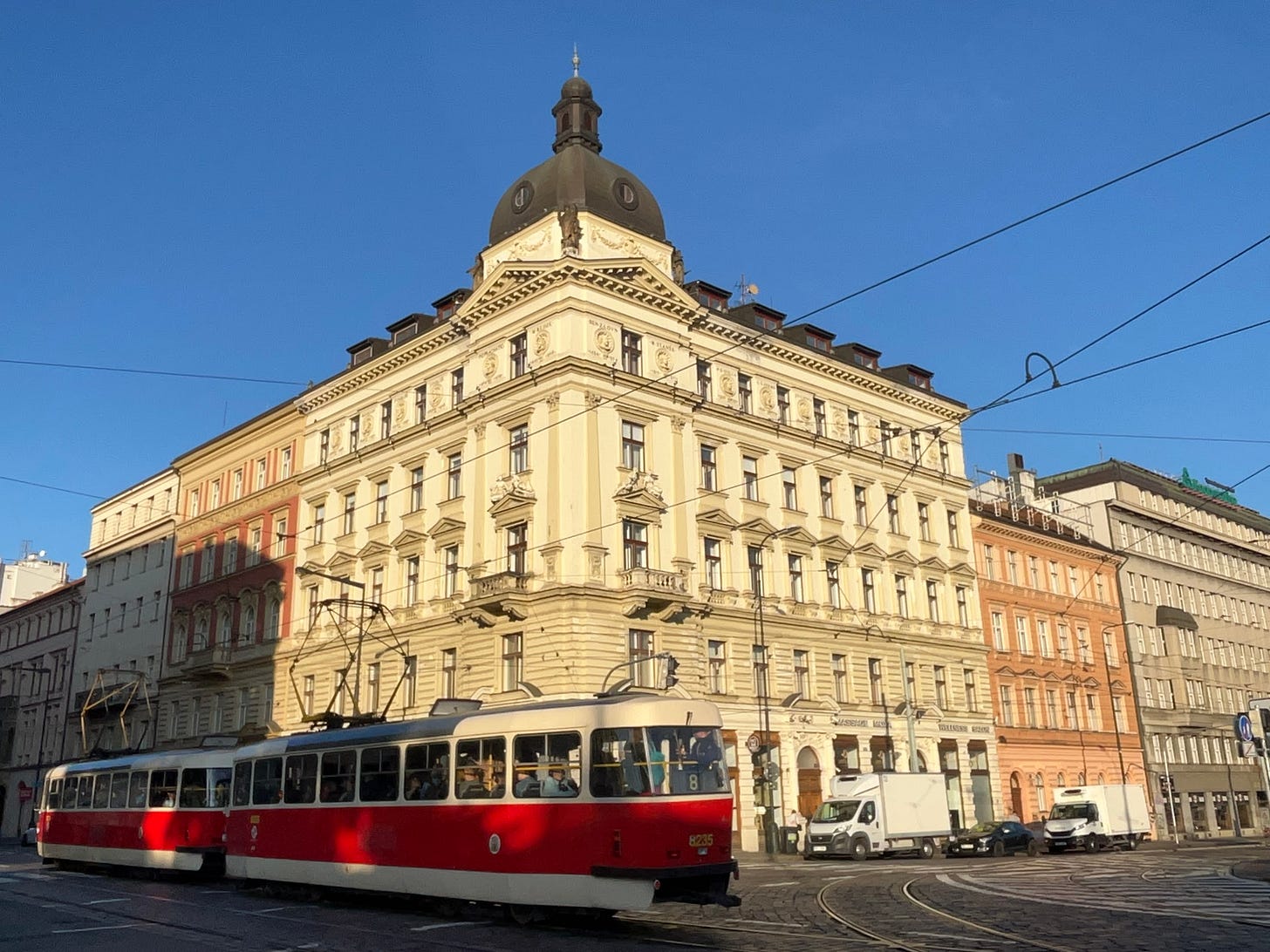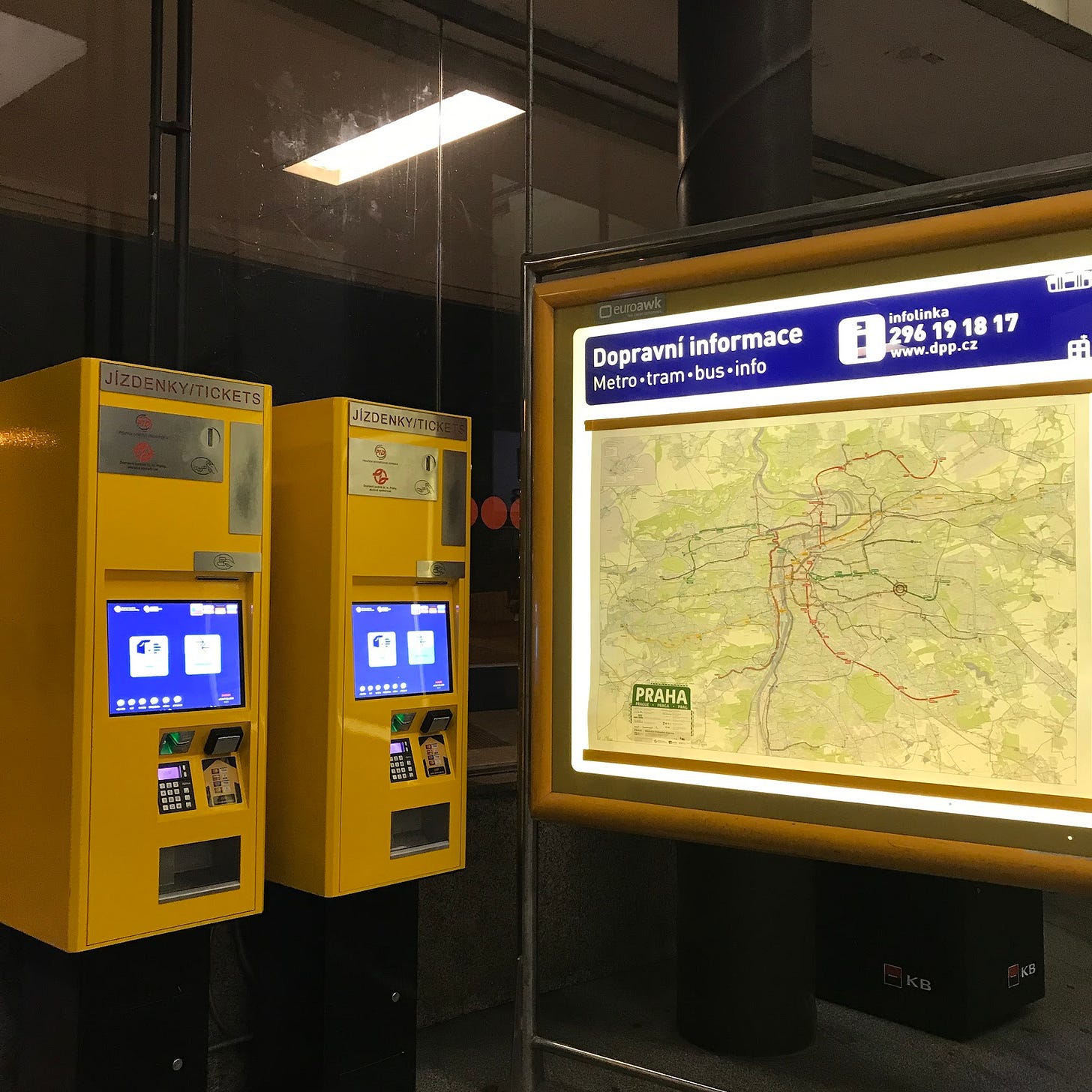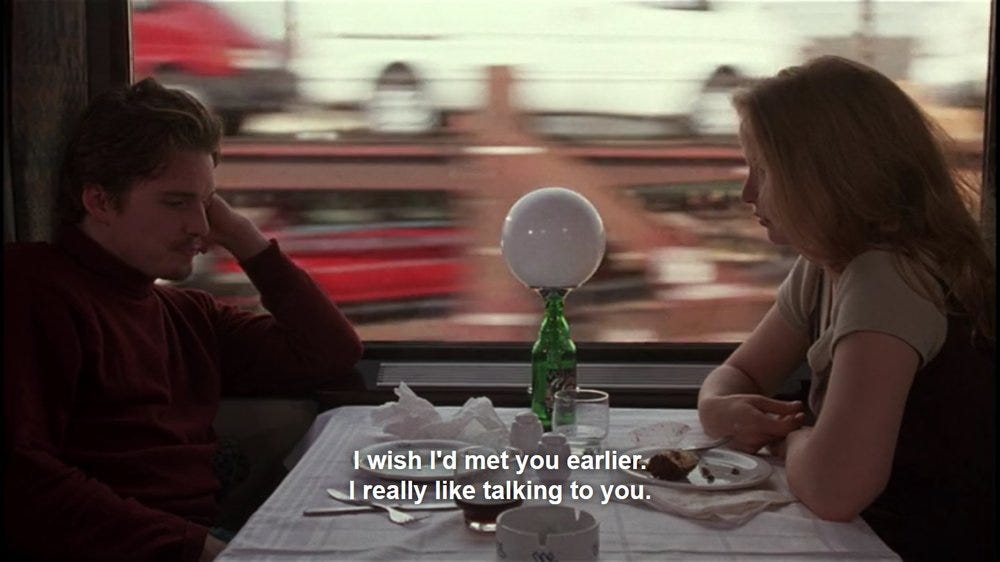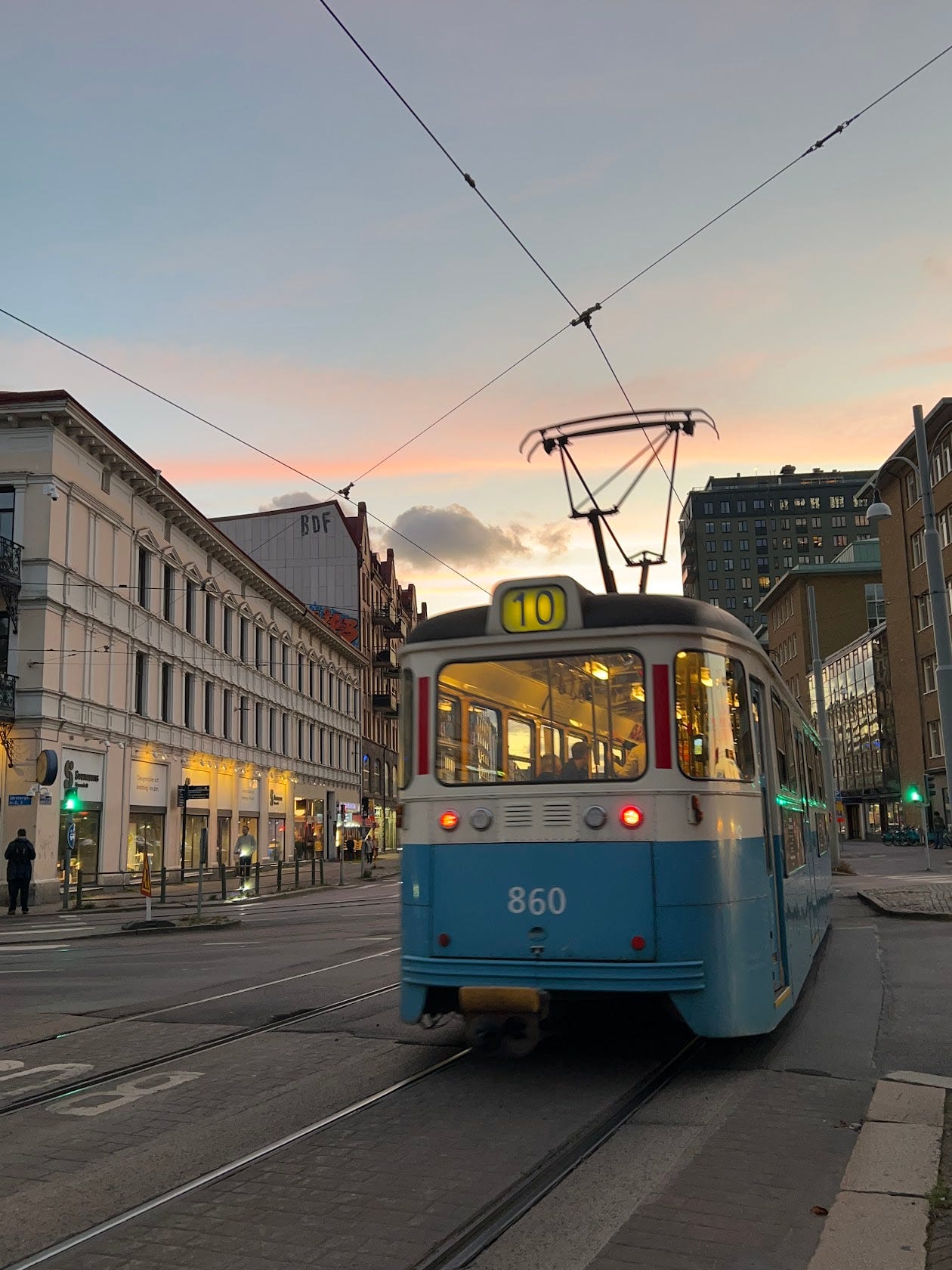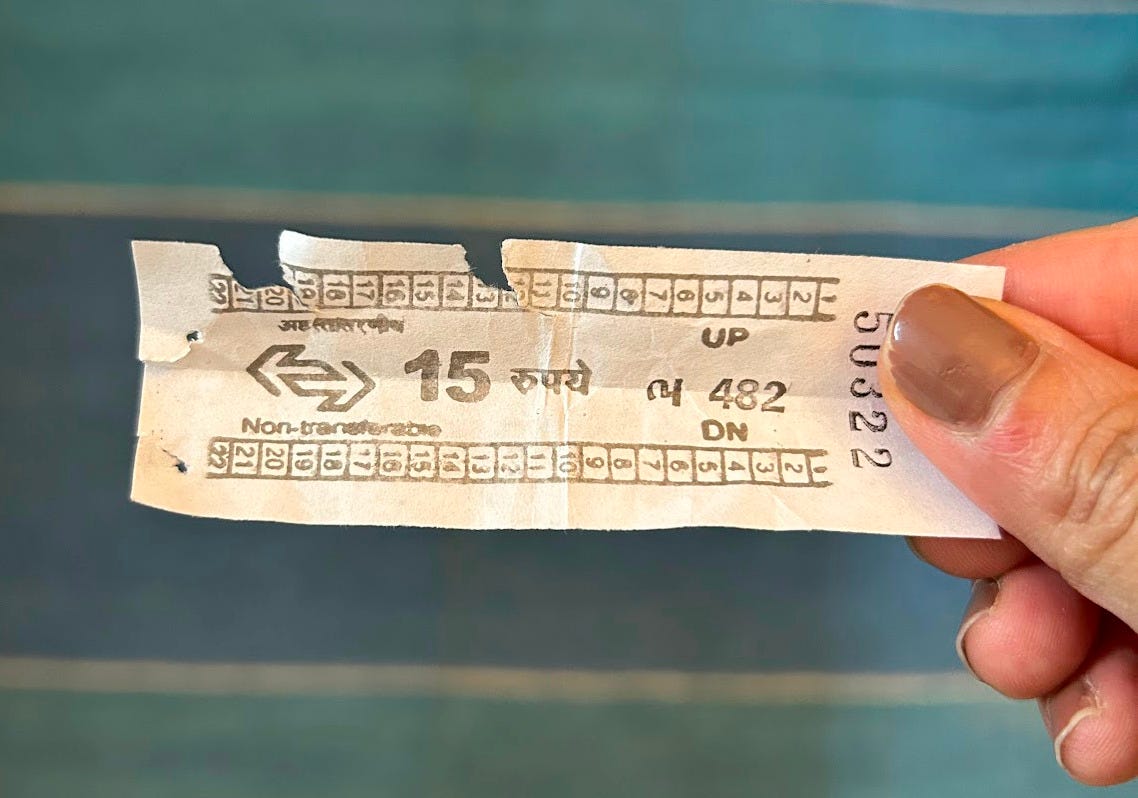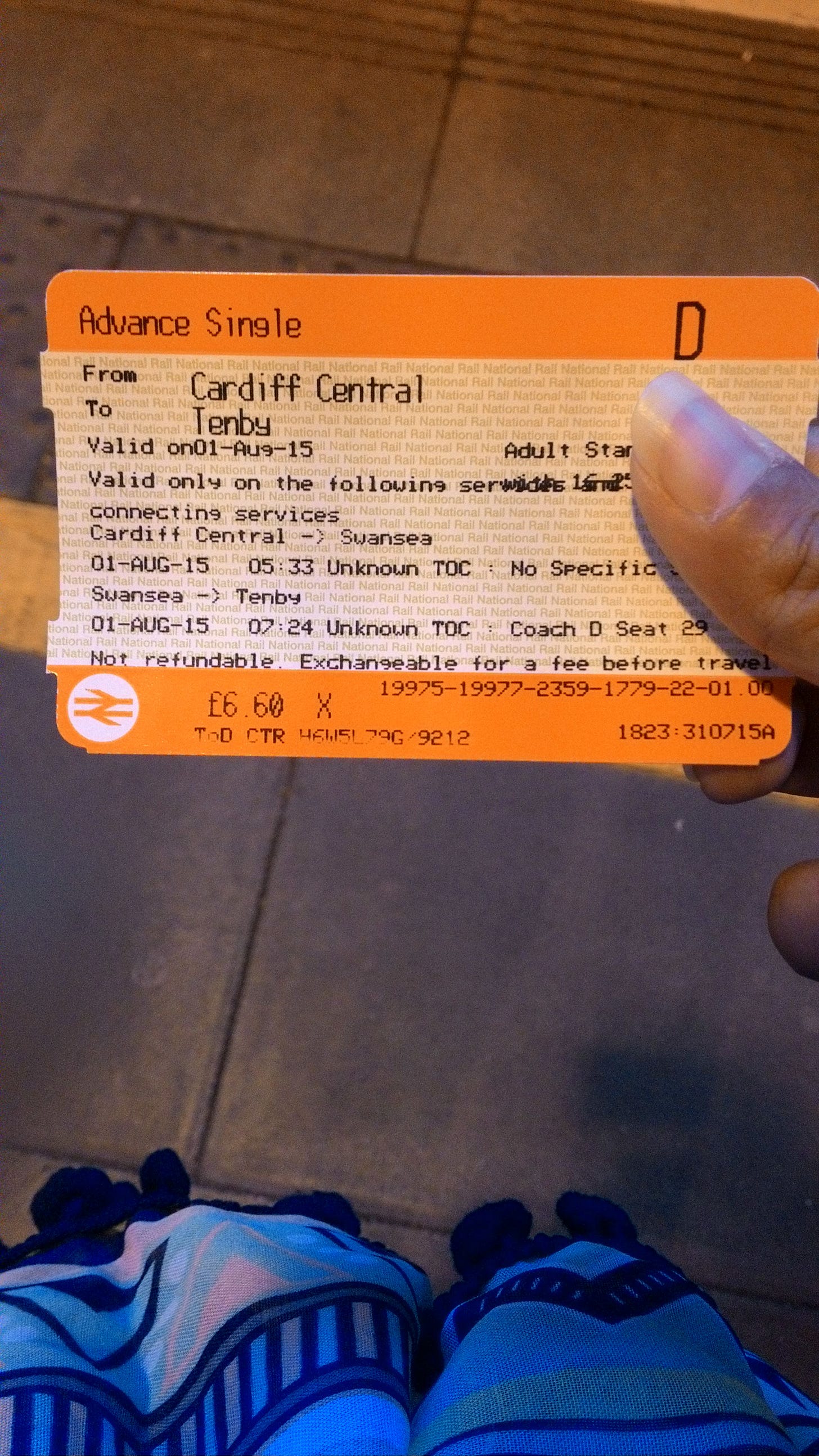After one year of traveling only and only in public transport — trams, buses, trains, ferries, scooters, bikes, etc. — I’ve come to realise that it might be the most literary forms of commute. This means that whenever I take public transport, be it here in Sweden, or back home in Delhi/Calcutta or when traveling elsewhere — London, Berlin, Prague, Frankfurt, Amsterdam — these vehicles have offered more to me than the closed off cabin of a four or six-seater taxi or a personal car.
I feel like we’re at that stage of conversations around climate change where we all know how much better public transport is for us in a variety of ways: better communal connections, safer and more equitable form of transport, reduces road congestion, benefits for the community, etc. But it took me a year long spell of sticking to public transport only to make me really understand how it also enriches my mental landscape, making me think better. And it’s not all about people-watching! Trust me.
“I do a lot of writing and note-taking on trips: in airports, on airplanes, on trains. I recommend taking public transportation whenever possible. There are many good reasons to do this (one’s carbon footprint, safety, productive use of time, support of public transportation, etc.), but for a writer, here are two in particular: 1) you will write a good deal more waiting for a bus or sitting on a train than you will driving a car, or as a passenger in a car; and (2) you will be thrown in with strangers—people not of your choosing. Although I pass strangers when I’m walking on a city street, it is only while traveling on public transportation that I sit thigh to thigh with them on a subway, stare at the back of their heads waiting in line, and overhear sometimes extended conversations. It takes me out of my own limited, chosen world. Sometimes I have good, enlightening conversations with them.”
— Lydia Davis
One way of looking at it is that writing in situ is a great way to absorb the physical atmosphere and landscape around. While my tram rides in Gothenburg are comparatively short (30 minutes tops, compared to the 45 minutes minimum one way ride I took to work on most days in Delhi), there’s an element of openness to them. Not only is it a different, altogether new mode of transport, but it also combs through, with feverish intensity, stretches that are midway between land and water. A section of the North Sea runs parallel to the length of my tram travel at all points, making it immediately interesting to have a water body coast along on one side, juxtaposed against the rolling, concrete hills of Goteborg on the other.
It also makes for fun observations while being on the street — on sunny days, which are a grand total of 35 in a year (my exaggeration, of course! there are 45 of those, tops!) people love grabbing sun-soaked spots in the direction of travel. It makes for patient observation, as you see them poker-faced, listening to their music or podcast on airpods or headphones, with eyes closed at times to perhaps idle about in that moment of stillness in their commute. And me? I come from a hot, tropical country and am a succor for dingy corners where I can recede into the background and drown myself into a book.
Another aspect about taking public transport is being able to see so many people read — oh the sheer variety! Who says people don’t read anymore! They’re reading newspapers (from local to national to international), advert pamphlets, coursebooks, joke books, Swedish novels, Kierkegaard, Schopenhauer, George RRR Martin, Sally Rooney, all your usual suspects. At times I, too, travel with a book in hand, dipping in and out of it’s pages, distracted mostly by the view from my window seat; it’s a lot to process! On bus rides to this other part of city, I enjoy soaking up the views of lines of bungalows sprawling in the suburbs. Cats lounging by the kerbside, or waiting impatiently on sidewalks for their turn to sneakily cross the road or a tantrum throwing kid to roll across the roads on her tiny toy car — it’s a smorgasbord for the senses. Oh for what you see when you really look!
Ideally, I should bifurcate between the types of public transport I take and how each differ from the other, but for the sake of brevity here I will write about the experience as one whole. I’m thinking this is a good place to segue into psychogeography and the spatial potency public transport systems hold in the collective, silent theater of the daily lives on offer.
The Oxford English Dictionary defines “psychogeography” as “that branch of psychological speculation or investigation which is concerned with the effects on the psyche of the geographical environment.” Coined in 1955 by the Marxist theorist Guy Debord, the term was inspired by the concept of the flaneur, an urban wanderer and connotes playful or inventive ways of navigating urban space. Psychogeographers walk city streets as an act of creativity; they re-imagine the city and its re-imagines them.
While walking cities can be liberating for us, as someone who came from a place of very limited public transport, I’ve now come to believe that taking the tram (for instance) can be equally transportive, freeing. I would also perhaps go as far as to say that walking the city streets could be caked with pre-existing notions, literary quotations, perambulating but known ambitions, taking public transport is largely free from the trappings of artistic prefiguring. It creates its own psychogeography, and hence frees our mindspace up.
I lived in Delhi for years and before that moved from Lucknow to Chennai to Cardiff to Pune to Coimbatore, covering a web of cities. In these cultures, bereft of my personal mode of travel, I was quick to take up walking. I traversed wide range of kilometres on foot, exposing myself to various risks, and often running out of daylight to guide my wanderings. At one point I was faced by a group of seemingly drunk revelers on a street (Coimbatore), at another point a couple of men on a bike threw a bag of water at me screaming “Happy Holi!” (guess the city), and at yet another instant a guy nearly ran his bike on my calves until I ran inside the compound of a nearby building (Pune). In all these instances I was walking between work and home.
It’s glaring to note that all, but one, of these Indian cities are known for their limited public transport. Delhi even with all its widely written about public transport amenities has given me much grief — I confronted and chased a man trying to film me inside a general compartment of the Metro at 11am one July morning in 2017. It is with this lived phenomenological experience that I arrive to take public transport in cities outside of Delhi. And boy does it reward!
As numerous books, movies and songs, and life itself tells us, a lot can happen in the course of a single day. Our lives are neatly spliced into chunks of 24 hours where due to one thing or the other, many among us we end up spending some part of our time on public transport. Commuting is a way of living life, come to think of it. See all those shots of the glorious Chicago city vistas as observed during Sydney’s commute in the HBO show The Bear? Taking the train gives Syd the time to reflect on her job, her life and her a-hole boss-partner. It gave me a similar sliver of time during my journalism days.
In Goteborg while I don’t commute daily for work, I do take it almost every other day for some or the other errand — visit to the neighbourhood library, picking up alcohol, meeting M, going for a movie, a play, a museum visit, or a quick dash to the apothecary. During these commutes I parse through my surroundings, channeling the experiments of Georges Perec and the Oulipo.
I’ve made a handful of notes in my phone’s app, that I might never even revisit, I’ve noticed incidents or activities and sent texts about it to friends across the oceans, I’ve observed dogs sunbathing on the streetside and sent a note to this one specific pal, or sent running commentary about the scenery outside to M. On these tram journeys, I’ve seen way too many teens reading Kierkegaard and Nietzsche (prematurely, but that’s just me) and written idle email drafts and sent them to no one in particular. In doing so, I’ve inadvertently fallen into the tradition of writers, artists who’ve written moving accounts of the everyday, the personal and sometimes the public life that plays out on mass transit.
All of this is to say that in taking the tram in these last 10 months in Sweden, I’ve become attuned to a new way of observing the world around me. To observe the world on mass transit, is to undertake a long walk that serves as the dérive for writing. Up to some extent, it attenuates my sense of loneliness in this big new foreign city. An accidental symmetry forms joining two peripheral, centrifugal sites — thinking and writing — to the city’s centre of gravity. A new form of literature emerges; mine is perhaps relegated just to the pages of this blog and some scribbles on my phone and yet it gives me a reason to live, and by extension write deliberately, notice deliberately. And perhaps mass transit is somewhat a near perfect setting to perform this activity — better than sitting in cafe or a bar, better than walking, better still than cab ride musing — all of which I’ve done my fair share of.
Here, while I’m in the tram I can see up close the mores of Swedish fashion, the shades of bronze on faces of teenage girls, the post grunge tattoo on the necks of travelers, the end of school mid-June celebrations, the tired, haggardly post-winter-trek bodies of men and women. Oddly enough, more than in cars, it is in public transport that people are at their most throbbing, open and vulnerable selves. Always smiling (just Sweden things), accommodating, ticket validating. We travel together in these shared locomotives designed eons ago, now resurrected to make the planet more liveable. As the tram cruises through parts of the city in the winter afternoon at 330pm when the sun has already set and a pitch blue darkness sits atop the city, it’s in the glow of the tram coaches that I witness urban anonymity and solidarity at it’s closest, most natural best.
At the end of my longest trip on Goteborg’s trams, when the line approaches my stop I feel a pang of sadness. The trip for the day comes to an end, but leaves me with memories, observations and curiosities plenteous. I believe there exists a basic, primal explanation for why someone like me who didn’t grow up on mass transit, who didn’t even know what it was until I moved to big cities, feels so energized by these travels. These trams course through the cities like blood that runs through my veins, enlivening my body, keeping it alive, thrumming with all the pleasure there is to experience in the world.
“Streets that follow like a tedious argument
Of insidious intent
To lead you to an overwhelming question...”
― T.S. Eliot, The Love Song of J. Alfred Prufrock
Here are some recent essays I liked:
A literary writer who writes about walking as a woman and exploring places in a literary, psychological and intellectual way, I’m inspired by is Taran Khan. Her 2019 debut collection of essays, Shadow City: A Woman Walks Kabul, is an account of her eight years spent walking through various places and spaces in the Afghan capital. From that collection I especially love her essay on cinema halls. She’s written this piece for Faber about the act of putting one step in front of the other to map out a place by foot, while allowing the words to take up space in the head: The Street Teaches You: On Walking and Writing.
p.s.: I reviewed Khan’s book for the Chicago Review of Books in 2021: On Solitude and Discovery, in “Shadow City”
I am curious to know everything that happens behind the scenes of making a book, especially back home in India where it’s a well-guarded, and is purposefully kept inaccessible. That’s why I loved literary agent Anish Chandy’s tell all essay in the Deccan Herald where he takes us through a day in his life: The life of a literary agent.




